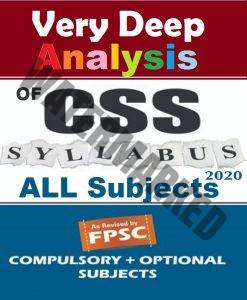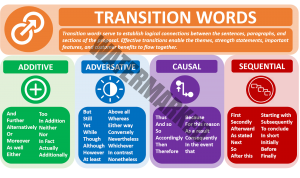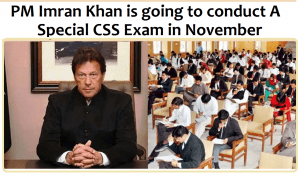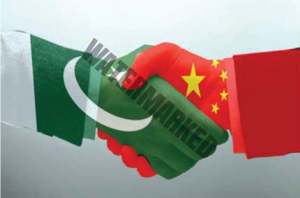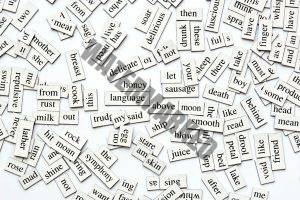Essay on the topic “Art for peace”[CSS 2019]
Here, you will read an essay on the topic “Art for peace” that came in CSS Examination 2019.
It has been noted that the majority of candidates had failed this essay back in 2019 owing to the fact that they took art as a method or a way. They considered this topic as ‘Arts of Peace‘ However, here the word art means fine art, painting, sculpture, drawing, artwork, design, visual arts, craft, creative work and artistry etc. Actually at that year UN conducted a price competition and that topic was ART FOR PEACE. The Tibetan community was bestowed with Art for Peace Awards in 2019.
It is a general perception that if you don’t get the full meaning of the essay, never ever try to think of opting for it. Furthermore, never try to top the essay paper, play it safe and pass it in any way. Let’s move to the topic now.
How Arts can bring peace to the world?
Art has long been seen as a vehicle for promoting peace and understanding among individuals and communities. Throughout history, artists have used their talents to convey messages of love, compassion, and unity, often in times of conflict and unrest. From the ancient cave paintings that depicted scenes of daily life and the hunt, to the modern-day street murals that address social and political issues, art has consistently played a crucial role in promoting peace.
One of the most significant ways in which art promotes peace is through its ability to bring people together. By creating a shared experience, art can help to bridge cultural divides and foster a sense of community among individuals. This is especially important in a world that is increasingly divided by political, religious, and ideological differences. Through the power of art, people can come together to appreciate and enjoy a common experience, regardless of their background or beliefs.
Furthermore, art has the power to inspire and motivate people to take action towards creating a more peaceful world. By presenting compelling and thought-provoking images, art can challenge individuals to question their beliefs and assumptions and to consider new perspectives. This can inspire people to take action to address the root causes of conflict and violence and to work towards creating a more peaceful and harmonious society.
Additionally, art can serve as a means of communication and expression, allowing individuals to convey their thoughts, feelings, and experiences in a way that is universal and relatable. By providing a medium through which people can express themselves and connect with others, art can help to promote understanding and empathy, and to break down barriers between individuals and communities. This is particularly important in situations of conflict, where art can provide a safe and non-violent way for people to express their views and to engage in dialogue with others.
It can be said that art plays a crucial role in promoting peace and understanding among individuals and communities. Through its ability to bring people together, inspire action, and serve as a means of communication and expression, art can help to bridge cultural divides, challenge assumptions, and foster empathy and understanding. As such, it is an invaluable tool in the pursuit of a more peaceful and harmonious world.
Again, art has the power to transcend language and cultural barriers, allowing it to reach and impact individuals across the globe. This is particularly significant in a world that is becoming increasingly interconnected, where individuals from diverse backgrounds and cultures are increasingly coming into contact with one another. Through art, people can communicate and connect with one another on a deeper level, regardless of their language or cultural differences.
Additionally, art can provide a space for individuals to process and heal from the trauma of conflict and violence. By creating a safe and supportive environment, art can provide a means for individuals to express their emotions, to process their experiences, and to heal from the psychological and emotional effects of violence and conflict. This is especially important in situations of war and armed conflict, where art can play a crucial role in promoting recovery and resilience among individuals and communities.
Similarly, art can serve as a means of nonviolent resistance and social change. Throughout history, artists have used their talents to challenge injustice and oppression and to promote equality and social justice. From the political cartoons that lampooned corrupt and oppressive rulers, to the street murals that address issues of inequality and discrimination, art has consistently played a vital role in advocating for peace and social justice.
Likewise, art is an incredibly powerful tool in the pursuit of peace and understanding. By bringing people together, inspiring action, providing a means of communication and expression, and promoting healing and social change, art has the ability to impact individuals and communities on a global scale. As such, it is an invaluable resource in the ongoing efforts to create a more peaceful and harmonious world.
Additionally, art has the power to inspire hope and optimism, even in the face of adversity. In times of conflict and violence, art can provide a glimmer of light and a sense of possibility, reminding individuals that peace and harmony are possible, and that they can play a role in creating a better future. This is particularly important in situations where individuals may feel powerless and hopeless, and where art can provide a sense of agency and purpose.
Also, art can serve as a means of documenting and preserving history, allowing individuals and communities to learn from the past and to avoid repeating the same mistakes. By creating a visual record of events and experiences, art can provide a valuable resource for understanding the past and for shaping the future. This is especially important in situations of conflict, where art can help to preserve the stories and experiences of individuals who may otherwise be forgotten or silenced.
Moreover, art can provide a means for individuals and communities to celebrate their culture and heritage, and to preserve their traditions and values. In a world that is rapidly changing and globalizing, art can help to ensure that the unique and diverse cultures of the world are not lost, but are instead celebrated and preserved for future generations. By promoting cultural understanding and appreciation, art can help to foster a sense of unity and commonality among individuals and communities, and to promote peace and harmony.
Besides, art can provide a space for individuals and communities to explore and express their emotions and experiences in a safe and non-violent manner. In situations of conflict and violence, individuals may feel overwhelmed and traumatized by their experiences, and may struggle to process and make sense of their emotions. Through art, individuals can explore and express their feelings in a way that is creative and therapeutic, allowing them to better understand and cope with their experiences.
Likewise, art can provide a platform for individuals and communities to share their stories and experiences with a wider audience. In situations of conflict and violence, the voices and experiences of individuals and communities are often silenced and marginalized, and their stories may go unheard. Through art, individuals can share their stories and experiences with others, allowing their voices to be heard and their experiences to be understood. This can help to promote empathy and understanding among a wider audience, and to foster a sense of commonality and shared humanity.
Moreover, art can provide a means for individuals and communities to envision and work towards a more peaceful future. By creating a space for imagination and creativity, art can help individuals and communities to think outside the box and to explore new possibilities for peace and harmony. Through art, individuals can imagine and visualize a future that is free from conflict and violence, and can work towards making that vision a reality.
One example of how art can promote peace can be seen in the use of art therapy for individuals and communities affected by conflict and violence. Art therapy is a form of psychotherapy that uses art as a means of expression and communication. By providing a safe and supportive space for individuals to create and explore their emotions through art, art therapy can help to promote healing and resilience among individuals who have experienced trauma.
Art therapy can be particularly effective in situations of conflict and violence, where individuals may struggle to express their emotions and experiences through traditional means of communication. Through art, individuals can explore and express their feelings in a way that is creative and non-verbal, allowing them to better understand and cope with their experiences. Furthermore, art therapy can provide a space for individuals to connect with others and to build a sense of community and support, which can be crucial in promoting healing and resilience.
One organization that is using art therapy to promote peace is the International Association of Trauma Professionals (IATP). The IATP is a global network of trauma professionals who are dedicated to promoting the use of art therapy in the treatment of trauma. The IATP works with individuals and communities affected by conflict and violence, providing art therapy services and training to help promote healing and resilience.
In determination, art is a powerful tool in the pursuit of peace and understanding. By providing a space for expression, sharing stories, and envisioning the future, art can help individuals and communities to cope with the trauma of conflict and violence, to foster empathy and understanding, and work towards creating a more peaceful world. As such, it is an invaluable resource in the ongoing efforts to promote peace and harmony.
In conclusion, art has the power to promote peace and understanding among individuals and communities. Through its ability to bring people together, inspire action, and serve as a means of communication and expression, art can help to bridge cultural divides, challenge assumptions, and foster empathy and understanding. Additionally, through its use in art therapy, art can provide a space for individuals to heal from the trauma of conflict and violence, and to promote resilience and hope. As such, art is an invaluable resource in the pursuit of a more peaceful and harmonious world. Art is an incredibly powerful tool in the pursuit of peace and understanding. By bringing people together, inspiring action, providing a means of communication and expression, promoting healing and social change, inspiring hope, and preserving culture and heritage, art has the ability to impact individuals and communities on a global scale. As such, it is an invaluable resource in the ongoing efforts to create a more peaceful and harmonious world.
Please let us know about your feedback on SeekerGK.com or write in the box below that on which topic you want us to write an essay:)
For MCQs of all competitive exams, visit CSS MCQs


